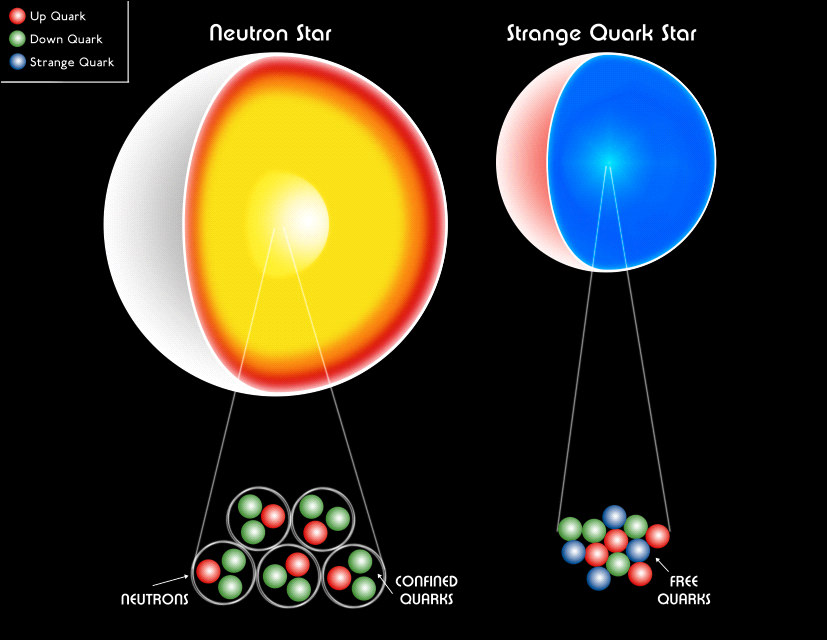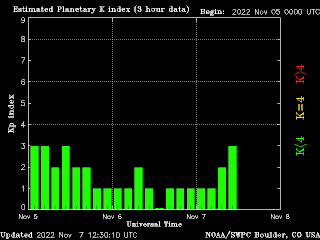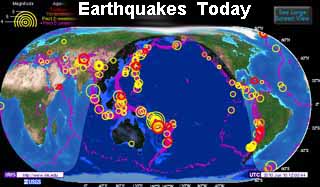https://spaceweather.com
SOLAR
BLAST JUST MISSES EARTH: On Saturday, August 7th, magnetic fields
around sunspot 1093 erupted. NASA spacecraft and many amateur
astronomers photographed the blast, which produced a strong M1-class
solar flare and hurled a coronal mass ejection (CME) into
space--apparently just missing the sun-Earth line. The explosion also
made whooshing sounds in the loudspeakers of some shortwave radios.
Visit https://spaceweather.com for audio recordings and movies of this latest solar event.
AURORA
RECAP: Last week's geomagnetic storm sparked Northern Lights as far
south as Iowa in the United States, and some nice Southern Lights over
Antarctica. For the latest images, start browsing here: https://www.spaceweather.com/aurora/gallery_01aug10_page4.htm
SPACE WEATHER ALERTS: Would you like a call when geomagnetic storms erupt at your latitude? Sign up for Space Weather Phone: https://spaceweatherphone.com
PERSEID METEOR UPDATE: "The Perseids are booming here in Alabama," reports astronomer Bill Cooke of the Marshall Space Flight Center. "Although the peak of the shower is almost a week away, we saw five Perseid fireballs last
night (Aug. 5-6). It's a good sign that this year's shower will be a
good one.
**************************************************************
Now from UNIVERSETODAY.com
Astronomy Without A Telescope – Strange Stars |

One
step closer to a black hole? A hypothetical strange star results from
extreme gravitational compression overcoming the strong interaction that
holds neutrons together. Credit: Swinburne University -
astronomy.swin.edu.au
Atoms are made of protons, neutrons
and electrons. If you cram them together and heat them up you get plasma
where the electrons are only loosely associated with individual nuclei
and you get a dynamic, light-emitting mix of positively charged ions and
negatively charged electrons. If you cram that matter together even
further, you drive electrons to merge with protons and you are left with a collection of neutrons – like in a neutron star . So, what if you keep cramming thatcollection of neutrons together into an even higher density? Well, eventually you get a black hole – but before that (at least hypothetically) you get a strange star . Click to continue…
Space Telescopes Team Up to Capture Spectacular Galactic Collision |

A
new image of two tangled galaxies has been released by NASA's Great
Observatories. The Antennae galaxies, located about 62 million
light-years from Earth, are shown in this composite image from the
Chandra X-ray Observatory (blue), the Hubble Space Telescope (gold and
brown), and the Spitzer Space Telescope (red). The Antennae galaxies
take their name from the long antenna-like arms seen in wide-angle views
of the system. These features were produced in the collision. Image
credit: Chandra: NASA/CXC/SAO, Spitzer: NASA/JPL-Caltech, Hubble:
NASA/STScI
From JPL:
A new image of two tangled galaxies has been released by NASA's Great Observatories. The Antennae galaxies, located about 62 million light-years from Earth , are shown in this composite image from the Chandra X-ray Observatory (blue), the Hubble Space Telescope (gold and brown), and the Spitzer Space Telescope (red). The Antennae
galaxies take their name from the long, antenna-like arms seen in
wide-angle views of the system. These features were produced in the
collision.
Click to continue…
Aurora Borealis at Telemark - Aug. 04, 2010
This
near 2 min. long footage is made from som 230 still-images from the
awesome Aurora Borealis at Telemark, South-Norway on Aug. 4th 2010.
Enjoy!
~~~~~~~~~~~~~~~~~~~~~~~~~~~~~~~~~~~~~~~~~~~~~~~
AND one of my favorite "places" to hang out is>>>
08 5th 2010 |
|
In our rush to look at the bright and beautiful objects in the night, we often overlook celestial curiosities in favor
of a more splashy neighbor. How many times have you looked at the Andromeda Galaxy , b ut really didn't take the time to powerup and study M110 ? Perhaps you spent a whole evening studying the intricacies of the Great Orion Nebula – but totally forgot about striking M78 ? I t's the way of things. But, next time you drop by the Dumbbell Nebula, spend some Hubl time with the sparkling stars of Messier 71… Click to continue…
**************************************************************

Current Moon Phase
August 9 - New Moon 17 Leo
August 24 - Full Moon 1Pisces

Current Solar Data From NOAA

Astronomy Picture of the Day NASA

Spaceweather.com

Current Earthquake Activity USGS
Ice Island Breaks off Greenland; Four Times the Size of Manhattan
National Geographic - August 6, 2010
N ew Petermann glacier collapse may be biggest in recorded history.
Huge ice sheet breaks from Greenland glacier
BBC - August 6, 2010

It is the largest Arctic iceberg to calve since 1962.
Ice Chunk Larger Than Manhattan Breaks Off Greenland Glacier
Live Science -August 6, 2010
Saturn Moon Rhea Loses Its Ring, Gains a Mystery National Geographic - August 6, 2010
Discovery of Saturn's Auroral Heartbeat Science Daily - August 5, 2010
An
international team of scientists led by Dr Jonathan Nichols of the
University of Leicester has discovered that Saturn's aurora, an ethereal
ultraviolet glow which illuminates Saturn's upper atmosphere near the
poles, pulses roughly once per Saturnian day.
Frogs Evolution Tracks Rise of Himalayas and Rearrangement of Southeast Asia Science Daily - August 7, 2010
Bizarre Frogs Rafted Atop Ancient Continents Live Science - August 6, 2010Between
15 million and 55 million years ago, India and Asia collided, starting a
series of geological events that raised the Himalayas and the Tibetan
plateau. Now, a group of well-muscled frogs is revealing how the
continents moved.
AUGUST 2010
Commemorative Events in August
August 11 - September 9 Ramadan
August 20 - September 12 - Mercury Retrograde
August 22 - Sun in Virgo
August 30 - September 6 - Burning Man



